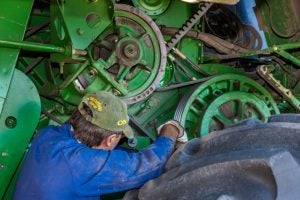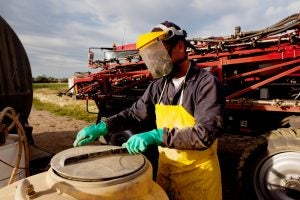Farming is a physically demanding occupation involving heavy machinery, livestock, and various tools that can increase the risk of accidents. Compounded with seasonal work, farmers often find themselves especially active during busy seasons such as planting and harvesting.
The news is full of farming injuries lately. Just this week, a man in Michigan was found deceased underneath a small tractor. In North Carolina, another man was found dead under a tractor. A family in Kentucky said goodbye to a father and husband who passed away from injuries sustained after a tractor he was repairing jumped out of gear. A 5-year-old died in New York after becoming trapped in a piece of farm equipment. A West Virginia teen passed away in a farming accident. And an Iowa man died after when a driver struck his tractor.
Nobody sets out to be careless, and accidents do happen. But, with a death rate five times higher than all other professions combined, it makes sense that any number of factors might contribute to the risk of farming accidents.

What factors may contribute to increased risks, and how can we mitigate them?
While statistics related to agricultural injuries can be a little difficult to quantify, it’s all-too-easy to let the farm or ranch dictate your schedule, work, and exactly what you do to get the job done. At the end of the day, though, what matters most is getting home safely.
Increased Workload: Agricultural work can be seasonal and often involves periods of intense activity. During busy seasons, such as planting or harvesting, farmers may work longer hours and experience higher fatigue levels, increasing the likelihood of accidents.
Remember, safety should never be compromised, even during busy periods. By integrating safety into every aspect of the work, providing proper training, planning effectively, and encouraging a safety-conscious culture, agricultural workers can effectively manage increased workloads while maintaining a safe work environment.
You can’t plan for everything but developing a comprehensive plan that outlines tasks, timelines, and resource allocations while considering time for breakdowns and employee capacities can reduce the likelihood of rushed or unsafe work practices.
Labor Shortages: In some regions or industries, there may be a shortage of skilled labor in the agricultural sector. This can lead to inexperienced workers being employed or existing workers being overburdened with additional responsibilities, potentially increasing the risk of accidents.
There’s no easy answer here, but looking at equipment, and strategizing to prioritize efficiency and safety can mitigate some labor issues. Improvements in technology can also offer labor issue mitigation, but technology alone doesn’t come without risk.
Technological Advancements: While technology can enhance efficiency and productivity, it can also introduce new risks if not properly understood or managed. New machinery or equipment may require additional training or adjustments to existing safety protocols to ensure safe operation.
How can we mitigate them?
Operate farm machinery in accordance with safety guidelines and instructions. Ensure that operators are trained and experienced in using the equipment correctly. Avoid taking shortcuts or engaging in risky behavior, such as bypassing safety features or overloading machinery.
Regularly inspect and maintain all machinery and equipment to ensure they are in good working condition. Follow manufacturer guidelines for maintenance, and promptly address any mechanical issues or faults to minimize the risk of accidents.
Changing Farming Practices: Farming practices evolve over time to adapt to market demands, environmental concerns, or technological advancements. Introducing new methods or equipment without adequate training or adjustments to safety procedures can increase the likelihood of accidents.
Follow proper procedures for handling chemicals, and update employees on proper and safe us of any equipmient including grain bin safety, and animal handling safety.

External Factors: Weather conditions, such as extreme heat, heavy rain, or drought, can impact farming operations and potentially increase accident risks. Natural disasters like floods or wildfires can also create hazardous farm conditions.
When it comes to external factors, developing and communicating a plan to prepare for emergencies is a pivotal part of responding correctly to them. Prepare an emergency response plan that includes procedures for accidents, fires, natural disasters, and medical emergencies. Ensure that emergency contact information is readily available and that workers know how to respond to different situations.
Mental and Emotional Stress: Farming can be mentally and emotionally demanding, with factors like financial pressures, market uncertainties, or personal challenges. High-stress levels can impair concentration and decision-making abilities, potentially contributing to accidents.
It’s preached much more than it’s practiced, but prioritizing personal well-being is a large part of success on your farm.
»Related: N.C. dairy works to keep doors open after owner’s injury


